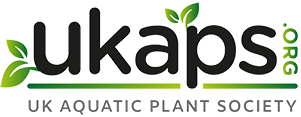Hi all,
OK stupid Newbie question but.... isn't this how most setups are configured? I guess most people who come back from LFS with a tank probably end up with an internal filter doing just this and those that do get an external one with have it as their only filter 😕
I think you are right, if you don't have plants (and a substrate) you are entirely reliant on the filter bacteria/archaea for nitrification. There are then three potential methods for the removal of NO3-.
- Chemical media, such as a specific anion exchange resin
- Water changes with water lower in nitrates.
- and anaerobic de-nitrification of NO3- and out-gassing N2 gas.
You obviously can keep, and breed fish, successfully using "microbe only" filtration, but it is a system with a single point of failure (the filter) and very little resilience.
In my experience successful fish keepers, who don't have planted tanks, often fail to fully appreciate how skilled they are.
I guess in an ideal world we would have some sort of wet & dry filter as well but is this just better rather then "a recipe for disaster" ?
Plants are the answer. There is a <
"negative feedback loop">, where enhanced nitrogen levels lead to enhanced plant growth, which leads to lower nitrogen levels. An increase in ammonia in a "microbe only" filtration system is likely to lead to fish death and increased ammonia production, which leads de-oxygenation which leads to fish death etc.
If I didn't have plants I would definitely have a wet and dry trickle filter, and the "Rolls-Royce" of filters is a planted trickle filter. If you have plants, and specifically some with aerial portions, you have a system which is much more efficient and resilient. As a general rule "plant/microbe systems" are about an order of magnitude more efficient than "microbe only" systems.
There are number of reasons for this, one that people often fail to grasp is that plants are massively net oxygen producers, basically for every molecule of CO2 used in photosynthesis a molecule of oxygen (O2) is produced.
At light compensation point CO2 use and oxygen evolution is in balance, but during active photosynthesis plant growth is a measure of the carbon capture. At the end of the photo-period usually both tank water and internal plant tissues are saturated with oxygen and it is overwhelmingly this internal oxygen store that is used for plant respiration during the dark period.
In an
<"emergent plant"> there is oxygen transfer to the substrate, which greatly increases the area of the zone where nitrification can occur.
Also how do you split the NH4 => NO2 and NO2=>NO3 processing? Is this by simply providing a bigger stronger colony that has access to oxygen to do the aerobic bit (meaning no food left to develop elsewhere) ???
You don't really need to, they are both aerobic processes. We now know that
<"a much greater range of organisms"> convert ammonia to nitrite, but the energy transfer is still
<"the same">, with oxygen consumed and bio-acidification (you've gained 4H+ ions) occurring.

A lot of the discussion in fish keeping circles is about "cycling" and ammonia and the idea that the nitrifying organisms will die if they don't receive a constant dose of ammonia,
<"but it isn't really true">. Oxygen is the prime metric, which is why scientists use BOD (Biochemical Oxygen Demand) as their measure of organic pollution.
cheers Darrel








